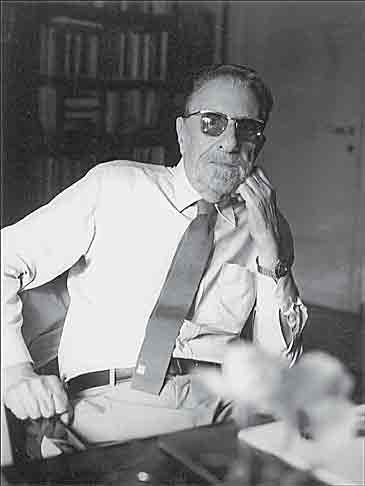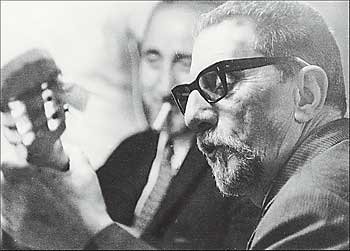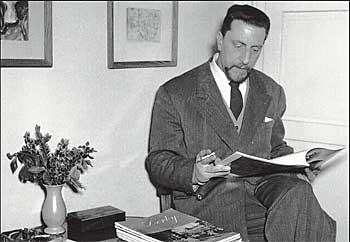Marco Pola:
the "poet of Trento"
by Alessandro Franceschini*
Marco Pola was born one hundred years ago in Roncegno (in the
Valsugana, in Italy's Trentino region). The "Poet of Trento",
as he was known in Italian literary circles (this definition
was coined by Vanni Scheiwiller, the foremost poetry editor
of the time), is one of the most important Italian poets of
the twentieth century. Marco Pola's voyage through the "short
century" is characterised by a sensitivity that enabled
him to observe, interpret and record the world around him through
the medium of his verses. A reality characterised, at times,
by a timeless unchanging rhythm, and at others, by continual,
relentless and brutal transformation. His poetic output was
vast, running to forty collections in Italian and in dialect
(more than one thousand poems), published between the end of
the 1920’s and the end of the Cold War.
Born and raised in pre-war Roncegno, under a palpable Hapsburgian
influence, Pola's idyllic childhood was soon shattered by the
bombs of the First World War. His experience as a refugee at
Katzenau, which he shared with many other people from Trentino,
severed the link with that serene and peaceful time and place,
which he would yearn for, for the rest of his life. The Fall
of Fascism, which the young poet viewed as a sign of hope for
a new age, and Futurism, which inspired his first poetic works,
marked a further split that was finally and definitively torn
asunder by the outbreak of the Second World War. After these
events, the poet was silent for 18 long years, until the middle
of the 1950’s.
After this interregnum, dedicated to study, self-discovery and
poetic reflections, Pola returned to the scene with a new approach
to poetry. His new style was structured, clearer and more mature.
Furthermore, during the intervening years, he had broadened
his contacts and established friendships with poets, editors
and literary figures in Veneto, Lombardia and Rome. Starting
in 1956 (when he brought out Quando l'angelo vuole) he began
to publish every three years, increasing his output again in
1963 (the year in which the collection Le fize del sofa was
published), when he began to write in dialect.
Pola chose to write in the dialect used in the regional capital,
the most cultured "idiom" - practically the national
language of the Region - which proved to be so effective a means
of communication that it surprised the poet, who had originally
regarded the experience almost as a joke. In fact, it was through
this dialect, albeit a re-evocation of the popular tradition,
that the author was able to bring the most significant innovations
to poetry in Trentino, transforming a language of lullabies
and insults into a valid vehicle for expressing the most secret
passions and troubles.
After the symbolic beginnings that characterised his work during
the 1950s, Pola began to use dialect as the ideal tool for recreating
realistically the worlds that had been swept away by the wars;
allowing him to reach his greatest heights of inspiration. Despite
the discovery of this rich, new medium for writing about and
describing reality, and its most authentic aspects, the poet's
work in Italian continued apace. From the end of the 1970s,
Pola was working simultaneously in Italian and dialect. He reserved
the former medium for his "civil" work, while expressing
more visceral and humorous sentiments in the latter. Towards
the end of his life, the schism between the two media became
increasingly wide, until he abandoned the use of dialect in
1989, when his work in Italian reached its greatest heights
with his last two collections, Autunno e maschere (1989) and
Il sonno delle lucertole (1991).
A foreboding illuminates me,
of dripping archipelagos laid out
beneath the enormous sun,
while the rose-gardens will surely die.
But the shipyards are silent.
White ship skeletons
Destroy all my sweet dreams.
I will die among the obsessions
Of gigantic mountains.
The capercaillie elsewhere, 1971




